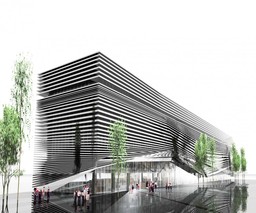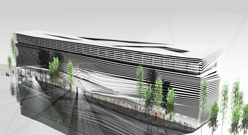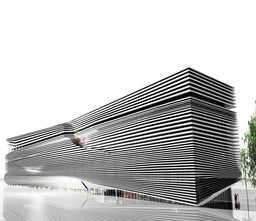-
- 03 JulHyperbody's MSc 2 Robotic Environments projects exhibited at Science Centre and V2_
- 02 Jul Hyperbody's Robotic Building team participates with MSc 2 projects in the D2RP event taking place 2-4 July at V2_
- 27 JunLecture by Prof. Kas Oosterhuis at the Huazhong University of Science and Technology
- 27 JunAchilleas Psyllidis publishes a book chapter in Computer-Aided Architectural Design Futures: The Next City, by Springer
- 16 JunLecture by Prof. Kas Oosterhuis at Leibniz Universität Hannover
- 16 JunAchilleas Psyllidis wins the 1st Prize for his project ROUTE on Linked Open Data for Smart Cities
- 14 JunDr. Nimish Biloria appointed as a member of the OCEAN design research association
- 08 JunSmart Textiles Workshop: Hyperbody and Smart Textiles at the University of Borås
- 29 MayAchilleas Psyllidis's paper accepted for publication and demonstration at the 15th International Conference on Web Engineering (ICWE 2015)
- 29 MayKas Oosterhuis, Henriette Bier, Sina Mostafavi and Jelle Feringa lecture at InDeSem 15
-
-

- Courtesy of Alireza Mahdizadeh Hakak, Ali Aleali, & Fatemeh Farmanfarmayee
Reaching the goals of Hyperbody in creating Non-standard buildings and adding the compatibility with LEED qualifications and meeting construction confinements, Alireza Hakak PhD candidate of Hyperbody has won an open competition. Hakak and his team were challenged to design a 10,000m2 commercial center for building industry in the Gilan Province, which is located in the northern part of Iran. Within a moderate climate and surrounded with forests, enough precipitation and unique landscape scenes are the main characteristics of the site.
Specific site dimension (150*20), building codes and regulation forced designer to extend the footprint through an east/west extension. To reach the final square meter, minimizing the voids and atriums was considered. However spotting two atriums for structural purposes meant that building respiration seemed to be necessary.
Flooded with environmentally conscious and LEED compliant, choices were implemented in energy efficiency (using the most natural ventilation and light by helping infiltration of the light and fresh air through elevation and roof), renewable energy (applying solar cells), water efficiency (designing a system for gathering waste water and recycle it for reuse), air quality (considering two atriums for natural light and ventilation) and usage of rapidly renewable resource (applying wood as a renewable resource for the second skin of building for climate and sound isolation).
The conference room, restaurant and other facilities shifted to the top floor not to interfere with commercial parts, also to get the advantages of the best view. Following the emergency exit regulations, three separate vertical accesses (staircase and elevators) been considered, starting from the top floor to the safe zones. Inside escalators will help the vertical access especially in the commercial spaces.
Seen from outside, the building seems to be formed by invisible forces of nature and actually deform the envelope. On one hand, we follow building codes and construction regulation and use the full capacity of the allowed footprint to reach the optimum square meters tp dictate the cubic simple shape. On the other hand, destructive forces and dissonances are at work which fragment the choreography of the monument and shaped the skin.
Architects: Alireza Mahdizadeh Hakak, Ali Aleali, Fatemeh Farmanfarmayee
 Facebook/
Facebook/
 Twitter/
Twitter/
 RSS
RSS


